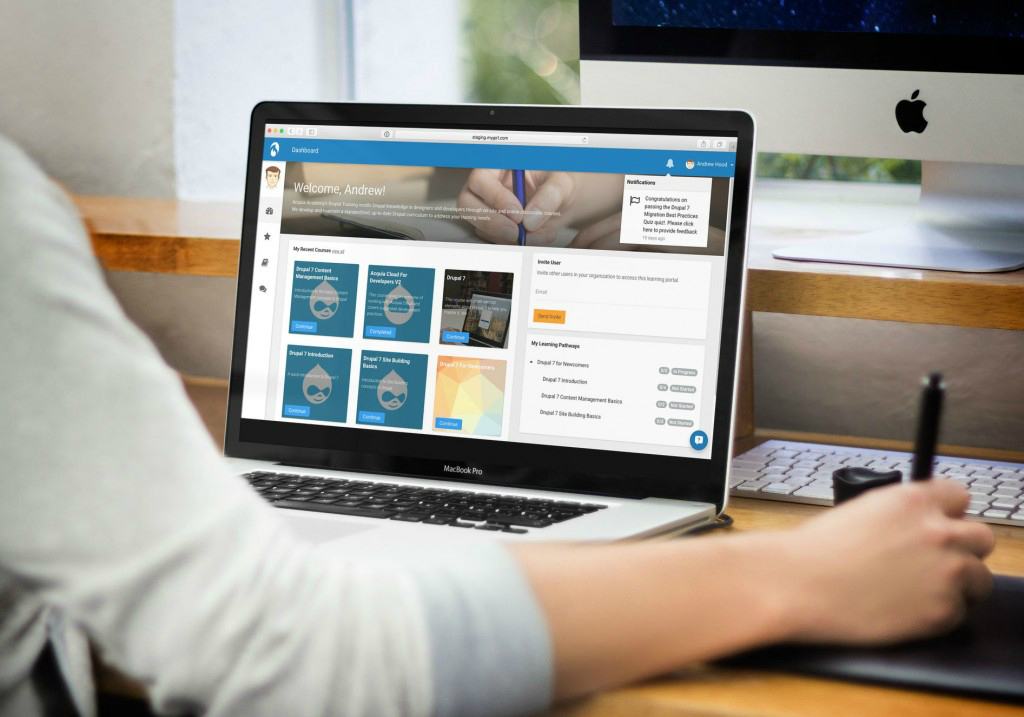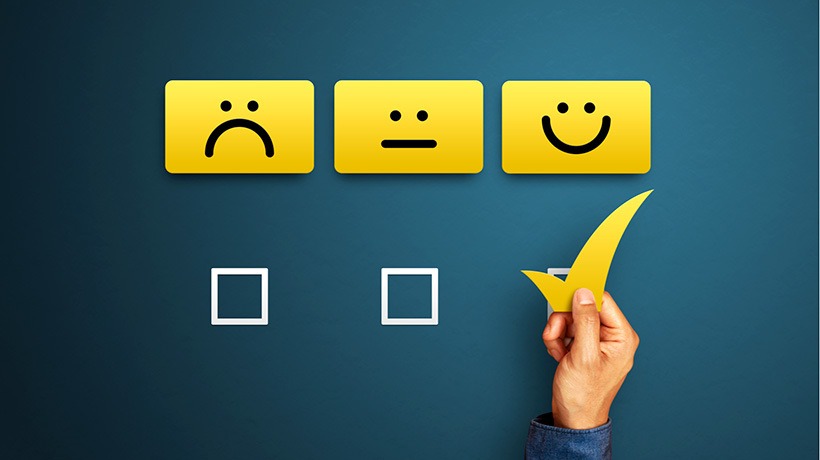Enhancing eLearning With Push Notifications
How do you stay connected with the world? With so many websites and apps, almost every user has come across push notifications. There may be some of them on your screen right now, too. Did you check them? Push notifications are messages popping up on screens, regardless of your device or browser. They let companies keep in touch with their target audience, share news, and remind you about abandoned carts or restored points, depending on the industry. The good news is that they can also help in eLearning.
Push notifications let learners know what’s coming up next, what they need to do, or what they missed if they stopped mid-lesson. The bad news is that they can be intrusive and annoying at times. That’s why you need proper education on leveraging push notifications to reengage your users, enhance your online education experience, and boost student communication. In this article, you’ll learn how to create a push notification marketing strategy for learning retention.
Push Notifications: What Are They And How Do They Work?
As mentioned, messages you receive on your devices from websites and apps are known as push notifications. They come in four forms:
- Desktop/mobile browser notifications or web push notifications
- Desktop push notifications from apps installed on your desktop
- Mobile app push notifications
- Push notifications for wearables like smartwatches
You don’t have to create a native/desktop app to trigger notifications. You can send them from browsers like Chrome, Firefox, and Safari. They will look like native app alerts on mobile screens, even if subscribers do not view the website. Sending push notifications is one of the most popular marketing strategies. It aims to increase the mobile conversion rate, regain user interest, and improve customer retention. Online stores deliver them on various occasions, such as:
- New arrivals
- Enticing deals
- Abandoned carts
Online games notify players when their lives are restored or when there is a discount on some character enhancements. Why not do so from your eLearning website or mobile app?
4 Tips For Creating Effective Push Notifications In eLearning
1. Understand Your Audience And Their Preferences
The first step before sending any messages is determining the target audience. You should appeal to students’ needs, so you need to know their expectations and interests. The target market is always expanding in the online education sector. Begin by researching and demographically segmenting your learners by the following criteria:
- Age group
- Gender
- Location
- Browsing history
- Behavior, etc.
Create marketing personas and categorize them according to their digital footprint. Then you should also determine your goals. What is the purpose of your notification campaign? Knowing the answer to this question will help you communicate more effectively. Consider what reaction you expect in this situation. Do you want the subscriber to read your blog, or return to abandoned courses? Consider these suggestions on when to issue notifications:
- New and existing course suggestions
- Membership or course expiration dates
- A reminder to keep earning rewards
- Votes, likes, and reactions to learners’ posts
Pro tip
Launch welcome drip push notifications to familiarize new subscribers and customers with your website. Introduce them to your platform by sending them a series of announcements at various intervals so they can explore the lessons and topics.
2. Craft Attention-Grabbing Headlines And Messages
The purpose of a push notification is to draw subscribers’ attention. Unlike emails, you have limited space to drive results, so you need to be inventive, entertaining, and cautious. It means writing concise headlines and messages with a compelling call to action. It can be as simple as a one-sentence message stating what, when, and where.
For example, if you announce the launch of a new course, you can send out a message like: "A new course is coming soon! Sign up for updates at [your_URL] to get notified as soon as it launches." Or, if you’re closing access to old courses, deliver a message like: "Closing access to my old math course. Click here for more information about why and how to enroll in the new one at [your_URL]." If there’s news that you want to share with your users, trigger a message like: "New research has been published on [research topic]. Click here for more information at [your_URL]."
With AI on the rise, you can utilize tools to craft the perfect push notification subject line and text, for instance, ChatGPT [1]. You can also employ humor and a friendly tone of voice. Add some visuals. Statistics show that emojis boost reaction rates by 20% [2]. Note that you should direct users to the dedicated page or section mentioned in the text, rather than to the homepage or main menu.
Pro tip
Tailor campaigns to user segments. Personalization is the most crucial aspect of all. According to statistics, personalized experiences encourage 80% of consumers to buy from a company. It can also increase user engagement and loyalty. In your notification message, address students by name and refer to their recent actions on the website/app.
You can segment the audience with tools like VWO, PushOwl, Notix, and many more. The required steps depend on the solution. For instance, Notix lets you create user segmentation based on categories opt-in requests or retargeting pixels. In the first case, users can choose the desired topic to receive notifications about. The second one enables you to track visited pages and send relevant messages based on this information.
3. Time Notifications Strategically
Sending too many push notifications to your subscribers is the most frequent error, and it’s also the one that will cause the most significant long-term harm. While you may increase the number of users coming to the platform in the short term, you may soon face too many opt-outs.
Push notifications are effective for communicating with learners in real time. However, they are easy to skip and forget about. Also, if abused, they can cause irritation and frustration, leading to high unsubscribe rates. That’s why you should determine the best time and frequency to engage a maximum number of users. Here is how to avoid notification overload:
- Ask for permission
With privacy at the forefront of today’s communications, you shouldn’t interfere with students’ lives without their consent. Notify about the desire to send updates and state that it’s easy to unsubscribe at anytime. - Note the learners’ location
Do this when choosing the timeframe for sending alerts. While it may be afternoon in one place, other learners may already go to bed. - Employ a sense of urgency
Use with limited-time offers. - Be consistent with your timeframe
Your app should notify only at predetermined times, not randomly. - Consider the recommended frequency
Some resources advise sending up to two notifications a day and up to five a week. It’s even better to deliver only one message a day on average. - Allow users to customize their notifications
It will provide them with more freedom and establish a positive image—that you respect students’ choices—for your platform.
4. Test And Optimize Notifications For Maximum Effectiveness
After launching web or mobile push notifications, you should measure their success to determine whether you’re on the right track. This is where you should leverage data and analytics. How do learners respond to your notifications? Do alerts bring them back on board? Do they encourage people to click a button, register for a lesson, or purchase a course?
If you see low click-through rates, few subscriptions, or a lot of opt-outs, you need to change your notification strategy. A/B testing can help you with that. It denotes separating your subscribers into two groups. The first one will see your regular notification, and the second will see something different, including:
- The text may be formulated in another way
- The headline may be shorter
- There may be more emojis
- Or something else is different compared to the first copy
To determine which ideas to keep, you should always measure your results. It’s a continuous process, like many others. Test numerous alternatives in advance before a specific season or product launch. It will let you play with the timing, tone, content, and other elements to find the most resonating option.
To Sum Up
A lot may be happening on your platform. You may launch new courses, close access to old ones, or share news. But how do you make it known to your users? Send notification messages. The potential of push notifications for eLearning is enormous. However, you should be careful with pouring them onto the users. People may turn them off if you irritate them, so all your efforts may go to waste. Persuade learners to keep your alerts by following these tips:
- Provide value
- Personalize texts
- Don’t send too many messages
If done correctly, push notifications can promote your business, drive traffic to your educational apps, and boost engagement.








![eLearning Industry's Guest Author Article Showcase [May 2023]](https://cdn.elearningindustry.com/wp-content/uploads/2023/05/eLIs-Top-Guest-Author-Articles-May-2023-.jpg)
